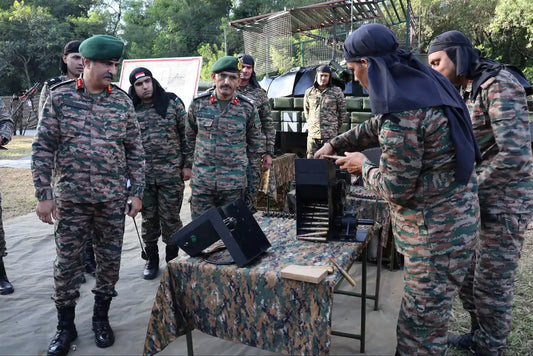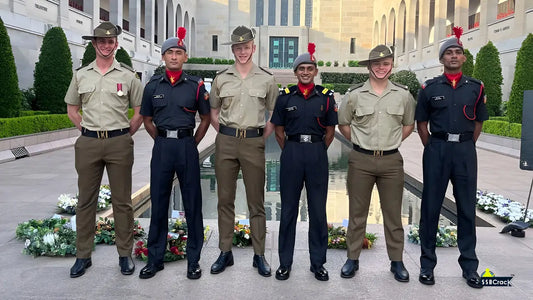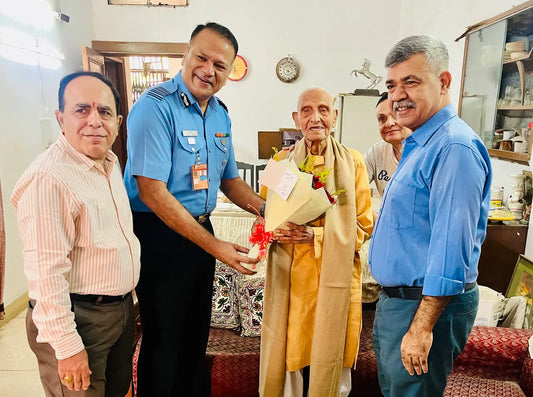What are the Power and Duties of Master Warrant Officer (MWO)?

The Indian Air Force (IAF), a cornerstone of India’s defence framework, is renowned for its discipline, professionalism, and operational excellence. Within its structured hierarchy, the Master Warrant Officer (MWO) holds a prestigious position as the highest Gazetted Officer Class-2 Rank. MWOs are seasoned professionals who combine technical expertise, leadership, and mentorship to ensure the IAF’s operational efficiency and mission success. This article provides a comprehensive overview of the powers, duties, and responsibilities of a Master Warrant Officer in the Indian Air Force, highlighting their critical role in maintaining the force’s high standards.
Introduction to the Master Warrant Officer Rank
The Master Warrant Officer rank, introduced in February 1950, is the pinnacle of the non-commissioned officer cadre in the IAF. MWOs are senior enlisted personnel who have demonstrated exceptional skills, dedication, and leadership over a career spanning typically 28 years or more. Unlike commissioned officers, who receive a commission from the President of India, MWOs hold a warrant signed by the Chief of the Air Staff on behalf of the President of India, symbolizing their authority and responsibility.
MWOs serve as technical experts, advisors, and mentors, bridging the gap between enlisted personnel and commissioned officers. Their role is multifaceted, encompassing technical proficiency, administrative oversight, leadership, and disciplinary responsibilities. With their extensive experience, MWOs play a pivotal role in ensuring the IAF’s operational readiness and fostering a culture of professionalism and discipline.

Powers of a Master Warrant Officer
While MWOs do not hold the same level of authority as commissioned officers, they possess significant powers within their scope of responsibility, particularly over enlisted personnel. These powers are derived from their rank, experience, and the trust placed in them by the IAF’s command structure. The key powers of an MWO include:
- Limited Disciplinary Authority: MWOs have the authority to enforce discipline among enlisted personnel under their command. While they cannot convene courts-martial or impose severe punishments, they can address minor infractions, issue warnings, and recommend disciplinary actions to commissioned officers. This authority is critical in maintaining order and adherence to IAF standards within their units.
- Advisory Influence: MWOs act as key advisors to commissioned officers on technical, operational, and personnel-related matters. Their insights, drawn from years of experience, influence decisions regarding squadron operations, equipment maintenance, and personnel management. This advisory role empowers MWOs to shape operational strategies and ensure alignment with the IAF’s objectives.
- Operational Oversight: MWOs have the authority to oversee critical operational tasks, particularly in their areas of specialization, such as avionics, flight engineering, communications, or logistics. They ensure that equipment, aircraft, and systems are maintained to the highest standards, directly impacting mission success.
- Training and Mentorship: MWOs have the power to design and implement training programs for junior enlisted personnel. They guide airmen in developing technical skills and professional conduct, ensuring the next generation of IAF personnel is well-prepared.
- Representation of Enlisted Personnel: MWOs serve as a voice for enlisted personnel, communicating their concerns, grievances, and needs to commissioned officers. This role empowers them to advocate for the welfare and professional development of airmen under their charge.
Duties of a Master Warrant Officer
The duties of an MWO are diverse and demanding, reflecting their seniority and expertise. These responsibilities span technical, administrative, leadership, and public-facing roles, ensuring the smooth functioning of their units and the IAF as a whole. Below is a detailed breakdown of their duties:
1. Technical Expertise and Guidance
MWOs are recognized as subject matter experts in their respective fields, whether in avionics, flight engineering, communications, logistics, or other technical domains. Their duties include:
- Providing Technical Guidance: MWOs ensure that operational standards are met by sharing their expertise with junior personnel. They troubleshoot complex technical issues and guide airmen in maintaining aircraft, equipment, and systems.
- Quality Assurance: MWOs oversee the maintenance and operational readiness of critical assets, ensuring compliance with safety and performance standards. For example, MWO SK Lamba, a logistics and supply chain expert, earned the “Ustad” skill level for his professional knowledge.
- Training Junior Personnel: They develop and conduct training drills to enhance the technical proficiency of airmen, ensuring the unit remains operationally effective.
2. Leadership and Mentorship
As senior enlisted leaders, MWOs are role models for junior ranks. Their leadership duties include:
- Mentoring Airmen: MWOs nurture a culture of professionalism, discipline, and esprit de corps. They guide junior personnel in their personal and professional development, fostering a sense of camaraderie and dedication.
- Setting Standards: MWOs uphold and enforce the IAF’s values, ensuring that airmen adhere to ethical standards and conduct themselves appropriately both on and off duty.
- Supervising Teams: They lead teams of airmen, ensuring tasks are completed efficiently and in alignment with operational goals.
3. Administrative Responsibilities
MWOs play a crucial role in the administrative functioning of their units. Their duties include:
- Managing Operations: MWOs assist commissioned officers in overseeing daily operations, including logistics, supply chain management, and personnel records.
- Maintaining Records: They ensure accurate upkeep of personnel files, equipment logs, and other administrative records, contributing to the unit’s efficiency.
- Ensuring Compliance: MWOs ensure that their units adhere to IAF regulations, safety protocols, and operational guidelines.
4. Health and Safety Oversight
MWOs are tasked with ensuring the physical and mental well-being of airmen under their charge. Their duties include:
- Enforcing Safety Protocols: MWOs ensure that personnel follow safety regulations, such as wearing proper uniforms and protective gear, and adhere to established protocols during operations.
- Monitoring Well-Being: They assess the mental and physical fitness of airmen, ensuring they are fit for duty and providing support when needed.

5. Advisory Role
MWOs serve as a critical link between enlisted personnel and commissioned officers. Their advisory duties include:
- Providing Insights: They offer technical and personnel-related advice to superior officers, influencing decisions on operations, training, and management.
- Facilitating Communication: MWOs ensure effective communication between enlisted personnel and officers, resolving concerns and fostering collaboration.
6. Public Representation
Though not a primary duty, MWOs may represent their units in public-facing roles, such as:
- Community Engagement: They interact with local communities or the media, promoting the IAF’s values and building positive relationships.
- Ceremonial Duties: MWOs may participate in ceremonial events, representing the professionalism and dedication of the IAF.
Professional Expectations and Skills
To fulfill their powers and duties effectively, MWOs must possess a range of skills and qualities, including:
- Technical Proficiency: MWOs are expected to maintain and enhance their expertise in their specialized fields, staying updated with technological advancements.
- Effective Communication: Strong communication skills are essential for liaising between enlisted personnel and officers, ensuring clarity and efficiency.
- Adaptability: The dynamic nature of IAF operations requires MWOs to be flexible and capable of handling rapidly changing situations.
- Ethical Conduct: MWOs must uphold the highest ethical standards, serving as role models for integrity and professionalism.
- Leadership: Their ability to inspire, guide, and mentor junior personnel is critical to maintaining discipline and morale.
Career Progression and Recognition
MWOs represent the pinnacle of the NCO cadre, but they have opportunities for further recognition and advancement:
- Promotions: MWOs may be promoted to honorary commissioned ranks, such as Honorary Flying Officer, based on merit and service.
- Honorary Commission: Upon superannuation, outstanding MWOs may be granted an honorary commission to recognize their exemplary service.
- Commendations: MWOs are often recognized for their dedication and contributions, as exemplified by MWO SK Lamba, who received a commendation from the Air Officer Commanding-in-Chief, Eastern Air Command, in 2013.

Salary and Benefits
The salary for an MWO in the IAF ranges from ₹7.2 Lakhs to ₹16.4 Lakhs per year, depending on experience (typically 31–33 years). The estimated monthly take-home salary is approximately ₹91,683 to ₹94,136 after standard deductions. Additional benefits include allowances such as Military Service Pay (MSP), House Rent Allowance (HRA), and other perks like medical facilities and leave benefits.
Conclusion
The Master Warrant Officer in the Indian Air Force is a linchpin in the organization’s operational and administrative framework. With their technical expertise, leadership, and mentorship, MWOs ensure the IAF remains a formidable force capable of safeguarding India’s airspace with precision and valor. Their powers, though limited compared to commissioned officers, are significant within their domain, enabling them to maintain discipline, guide junior personnel, and contribute to mission success. The duties of an MWO are diverse, ranging from technical oversight to public representation, reflecting their critical role in upholding the IAF’s standards of excellence.
By embodying the values of discipline, courage, and professionalism, MWOs not only enhance the IAF’s operational capabilities but also inspire the next generation of airmen. Their contributions are indispensable to the IAF’s mission of protecting the nation’s skies, making the role of the Master Warrant Officer one of immense responsibility and honor.




















11 comments
MWOs, WOs of IAF are Gazetted Group B ranks. They have the power and responsibility to administer, groom their juniors and to effect this they initiate Annual Confidential Reports of JWOs and Annual Performance Reports of Non Commissioned(Sgts Cpls, Leading AC (Air Craftsmen) ACs. They have been assigned the role of Presiding Officer of Board of Officers having lesser financial effects.
First of all MWO rank was not introduced in 1950. It is a legacy rank carried from RIAF. However JWO rank was introduced in 1976 abolishing the rank of Flight Sergeant. Secondly, the warrant is signed by the president, not by the CAS.
This is not NCO. That is gazetteed rank.
The certificate of MWO/WO/JWO is also given by the President of India. On his behalf CAS/DCAS/VCAS signs the certificate.
If you leave aside certain duties of Flying aircraft, controller most of the practical work done by MWO and below in IAF. But they do not get the required recognition. There are much differences between men and officer in India as compared to foreign countries. 8th pay commission to look into this and atleast minimise the pay differences which is increasing in every pay commission.
As per me MWO is most respectable person in the unit. He works like a axle, whole unit revolves around him. He is assigned officers duties also. In Navy he is authorised to clear the aircraft for flying doing duties of technical officer. I got promoted to equivalent rank in Navy in 1992 and remained till 2006 when I got HCO rank.